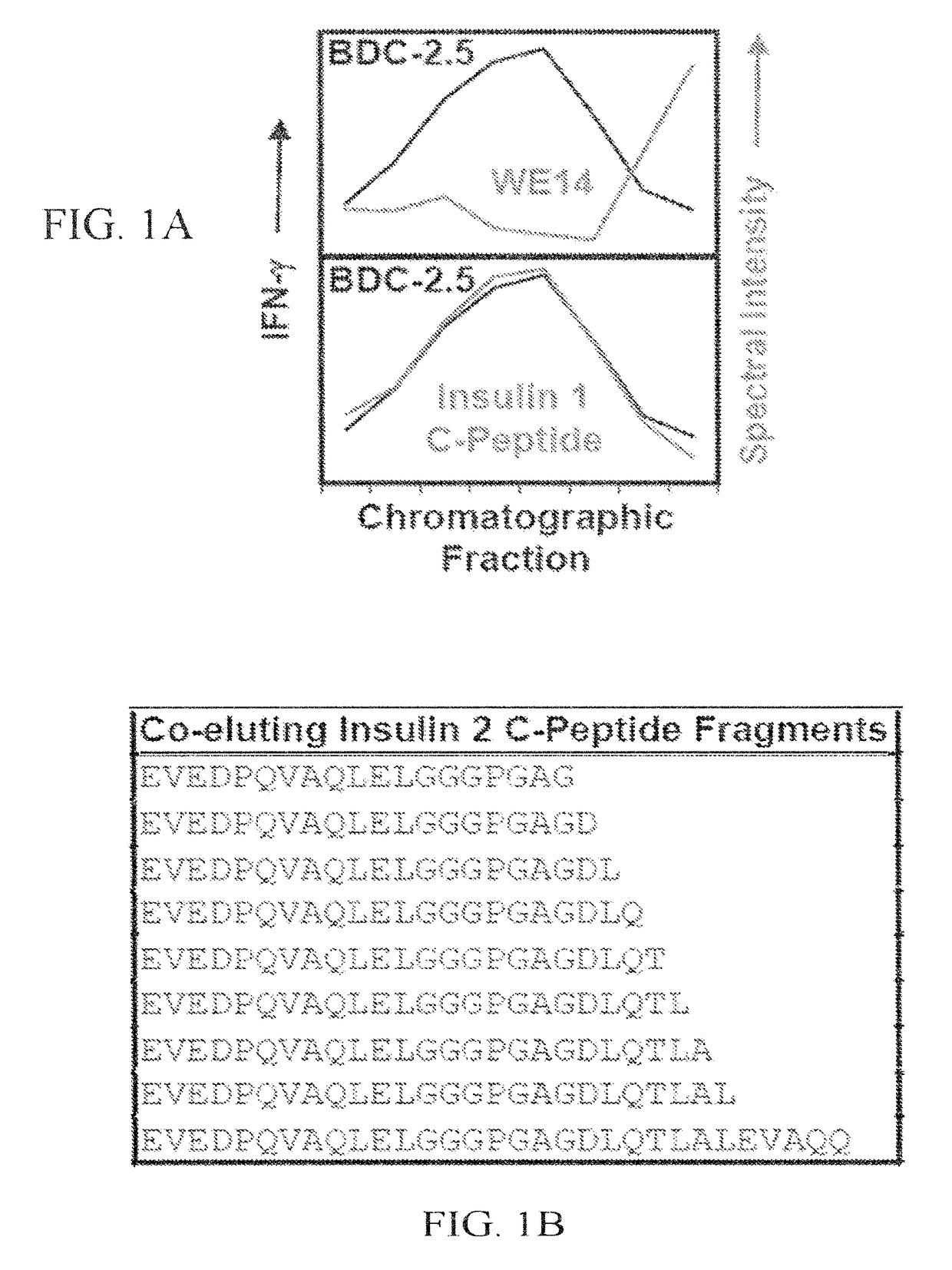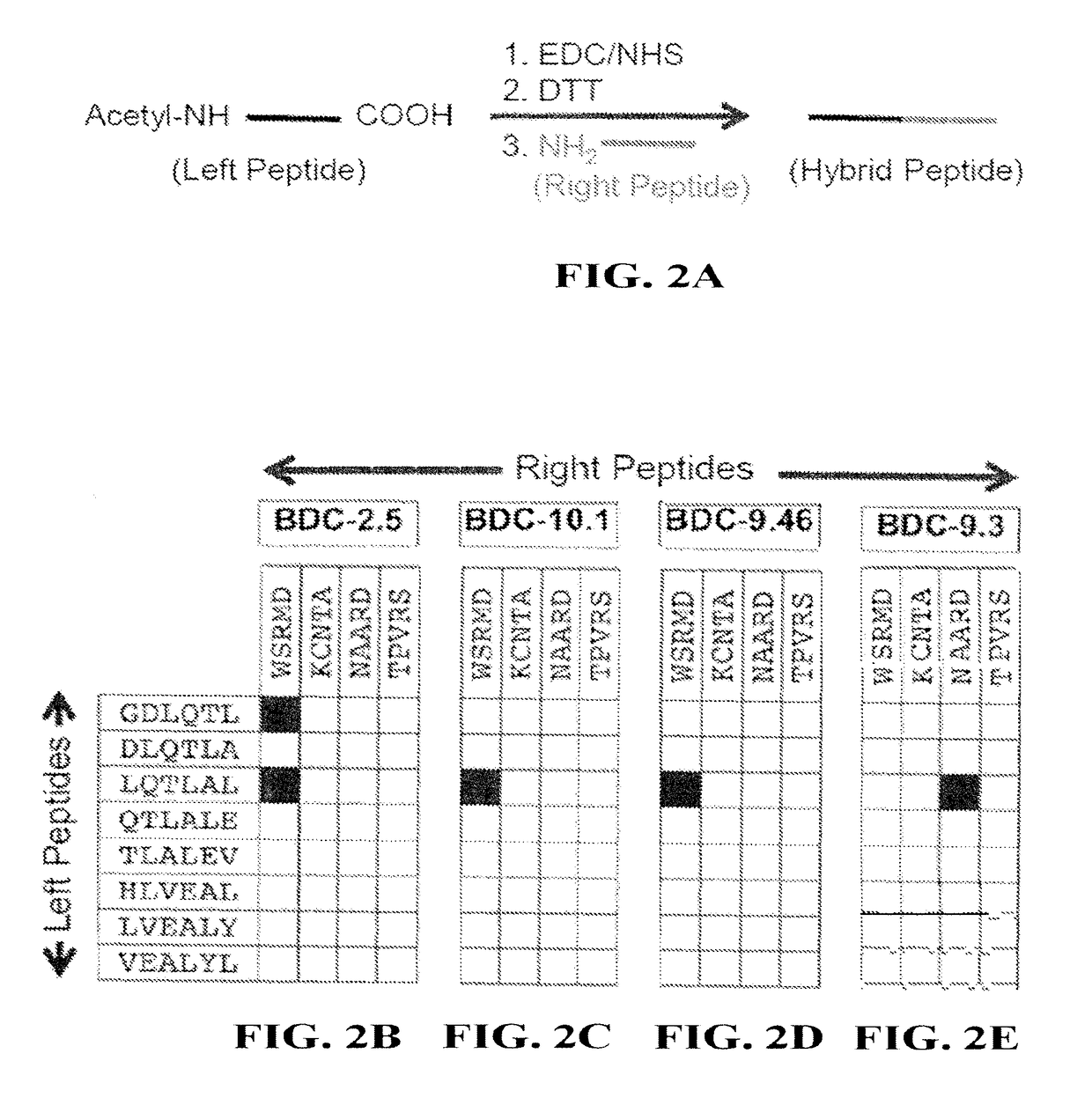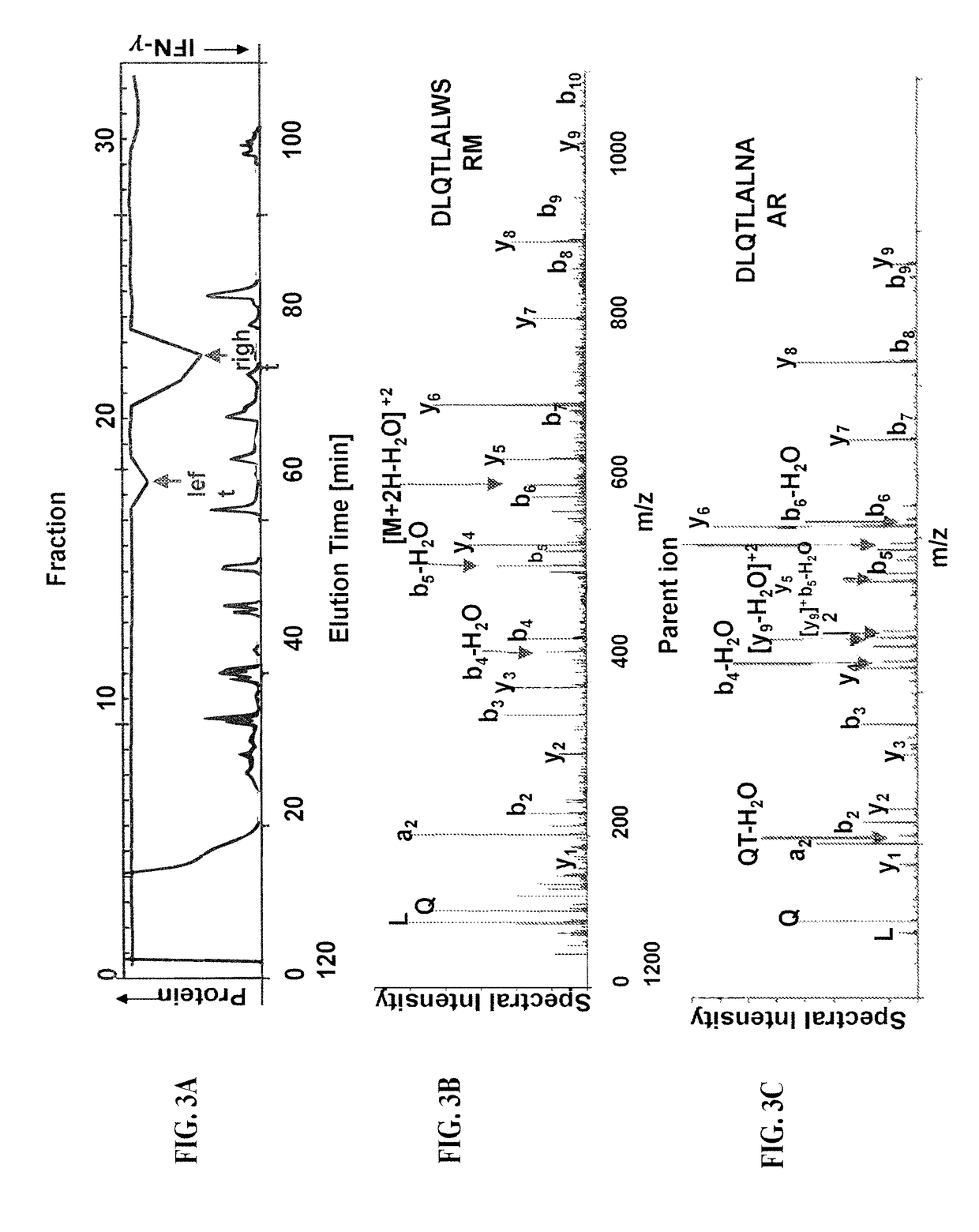Compositions and methods for diagnosing and treating autoimmune diseases
- Summary
- Abstract
- Description
- Claims
- Application Information
AI Technical Summary
Benefits of technology
Problems solved by technology
Method used
Image
Examples
example 1
and Synthesis of Hybrid Insulin Peptides
[0125]Using mass spectrometric analysis on chromatographic fractions that contain the natural 13-cell ligands for WE14-reactive T cell clones, the presence of the weakly antigenic peptide WE14 was verified. However, based on spectral intensity values that are indicative of the relative abundance of individual peptides, WE14 does not follow the chromatographic distribution profile of the natural ligand for BDC-2.5 (FIG. 1A, top). Conversely, the mouse insulin 1 C-peptide (FIG. 1A, bottom), as well as the insulin 2 C-peptide, follows the antigen distribution profile. Furthermore, a broad panel of C-peptide fragments (both insulin 1 and 2) were also identified in peak antigenic fractions (FIG. 1B) and a large number of these peptides also follows the BDC-2.5 antigen distribution profile. While these data suggest that C-peptide (and not WE14) could be the natural ligand for BDC-2.5, none of the WE14-reactive T cell clones recognize insulin C-pepti...
PUM
| Property | Measurement | Unit |
|---|---|---|
| Fraction | aaaaa | aaaaa |
| Antigenicity | aaaaa | aaaaa |
Abstract
Description
Claims
Application Information
 Login to View More
Login to View More - R&D
- Intellectual Property
- Life Sciences
- Materials
- Tech Scout
- Unparalleled Data Quality
- Higher Quality Content
- 60% Fewer Hallucinations
Browse by: Latest US Patents, China's latest patents, Technical Efficacy Thesaurus, Application Domain, Technology Topic, Popular Technical Reports.
© 2025 PatSnap. All rights reserved.Legal|Privacy policy|Modern Slavery Act Transparency Statement|Sitemap|About US| Contact US: help@patsnap.com



